The F1 World Championship in recent years he has been remembered not only for his domination of Red Bull Of Max Verstappenfor the new technical rules that introduced theground effect and low profile tyres. But the International Federationespecially the World Motor Sport Council, has already been working for some time on further ones regulatory changes that will be effective in 2026.
New F1 Technical Regulations 2026
The attention of the Formula 1 technicians in drafting the new one F1 regulations 2026 is aimed at the units hybrid V6 engineswith the purpose of reduce polluting emissions and contain costs, as far as possible.
New 2026 F1 hybrid V6 F1 engines
The first noticeable change will be the elimination of the MGU-Hi.e. the electric machine mechanically connected to the turbocharger unit, which gave the designers many headaches both in terms of reliability and costs.
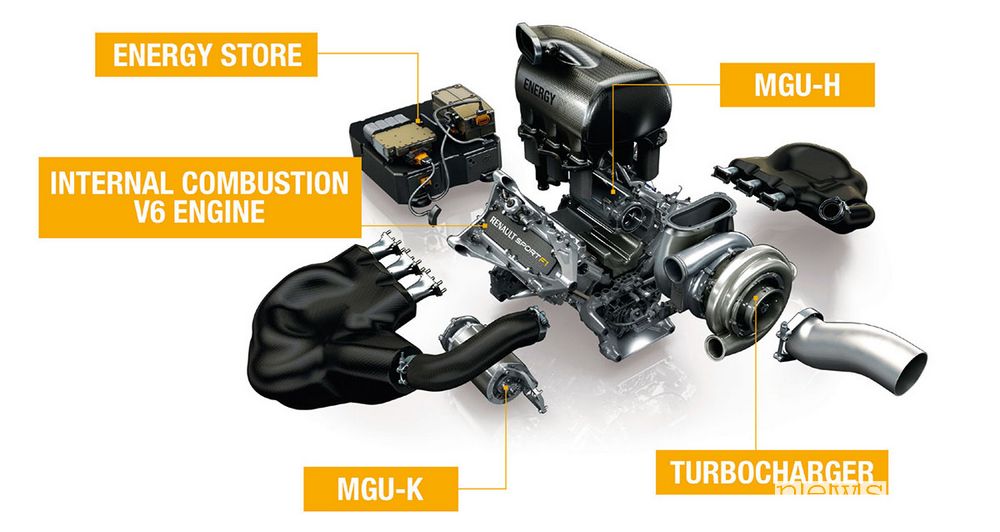
The will be maintained MGU-Kor the reversible group electric motor-generator which recovers energy during braking and pushes the car during acceleration, increasing its power, both in supply and in recovery of energy during braking, from the current 160 HP (120 kW) to approximately 470 hp (350 kW). The entire powertrain will deliver more than power 1,000 hp (746 kW).
New F1 Regulations 2026
The reduction of polluting emissions will be pursued with the use of a synthetic fuel and sustainable, currently being tested by many developers in collaboration with the main car manufacturers (for example Porsche, in collaboration with Enel, Siemens and some oil companies with the CO capture plant2 in Chile, where the e-fuel will be produced).
This revolutionary fuel has also recently been used by some historical means during an important international gathering, with excellent results. It should be noted that currently the price of e-fuel is around €7 per litre.

The objective of the regulatory changes also concerns the reduction of consumption: in 2026 the single-seaters will complete the Grand Prix using only fuel consumption 70 kg of fuelcompared to 160 kg in 2013.
F1 Technical Regulations 2026 energy flows
In chapter 5.4, the F1 technical regulations 2026 defines i energy flows of the power unitaccording to the following scheme:
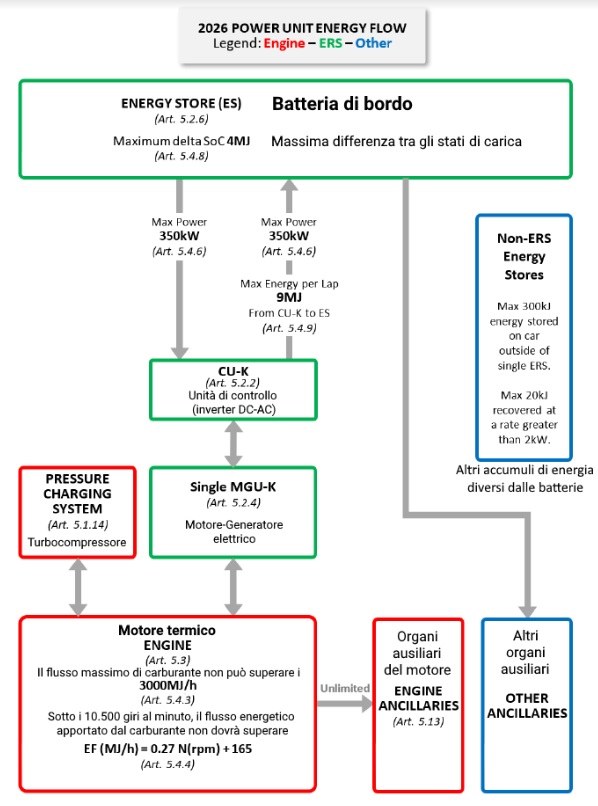
Furthermore, the following performance limits are defined:
- the energy flow provided by the fuel must not exceed 3,000 MJ/h (mega joules per hour)
- below 10,500 rpm, the energy flow provided by the fuel must not exceed the result of the formula EF (MJ/h) = 0.27 x N (N = rpm) + 165
- As mentioned above, the power of the MGU-K’s electric motor, or ERS-K (Energy Recovery System – Kinetic) when it acts as a generator, cannot exceed 350 kW.
- The power provided by the electric motor will be limited according to the speed of the car, according to the rule P (kW) = 1850 x 5 V (V = car speed in km/h) when the speed is below 340 km/h. Above this speed, it will have to be limited to 150 kW.
- The difference between the maximum and minimum state of charge of the on-board batteries (ES, or Energy Storage) cannot exceed 4 MJ.
- The energy recovered by the ERS-K cannot exceed 9 MJ per lap.
- The maximum torque of the MGU-K must not exceed 500 Nm.
- The MGU-K electric motor will only be able to provide traction at speeds above 50 km/h.
- The combustion engine will be equipped, as with the current regulation, with a single turbocharger, with a maximum weight of 12 kg and a maximum rotation speed of 150,000 rpm, and the maximum air pressure in the intake manifold cannot exceed the 4.8 bars.
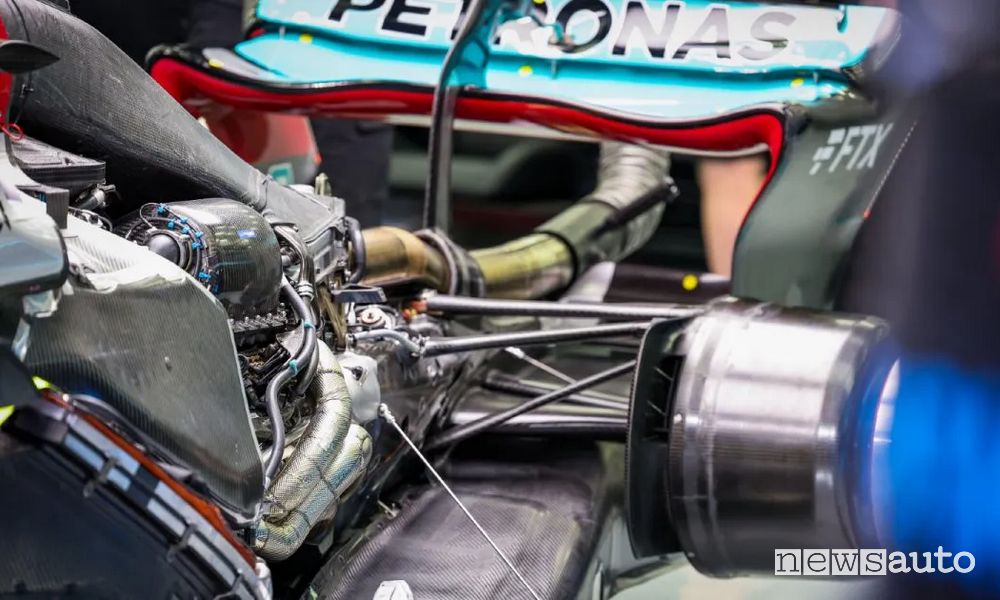
To better understand the scope of the energy flows described above, it should be kept in mind that the combustion of a liter of petrol generates an energy of approx 34 MJ. And that 1 kWh is equivalent to 3.6 MJ.
F1 Regulations 2026 active aerodynamics on the single-seater
In the objectives of the new technical standards of the F1 2026 regulation, the single-seaters will have to be smaller and lighterwith active aerodynamics to reduce aerodynamic drag, and interconnected to prevent accidents.
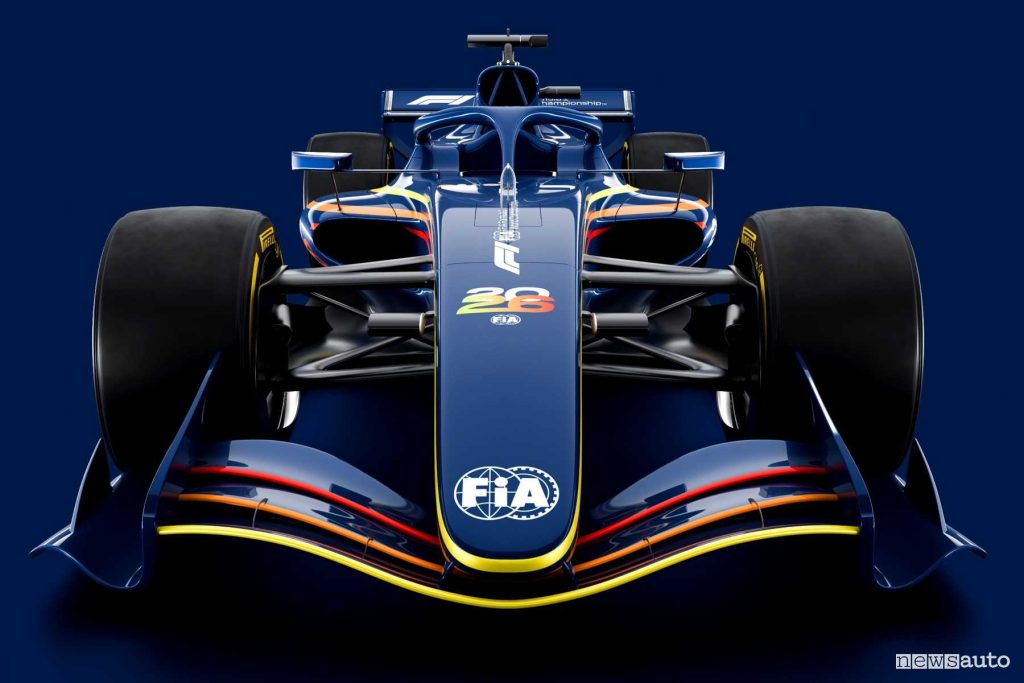
The head of the technicians of the International Federation, Pat Symondsexplained in a recent interview that simply reducing aerodynamic drag and, consequently, the aerodynamic downforcewould indeed lead to a decrease in fuel consumption, but with the downside that the cars would no longer have acceptable cornering stability.
Therefore the choice of real active aerodynamics is obligatory. And we are talking about a much more sophisticated system than the current DRS, which simply opens the rear wing on a straight line to facilitate overtaking.
Active aerodynamics as it works in F1
Active aerodynamics aims to improve the performance of cars and reduce slipstream turbulence, known as “dirty air”. The new cars will therefore have a front wing narrower and they will no longer have the front wheel arches. The rear wing will be mobile and composed of three elements, with simplified endplates.
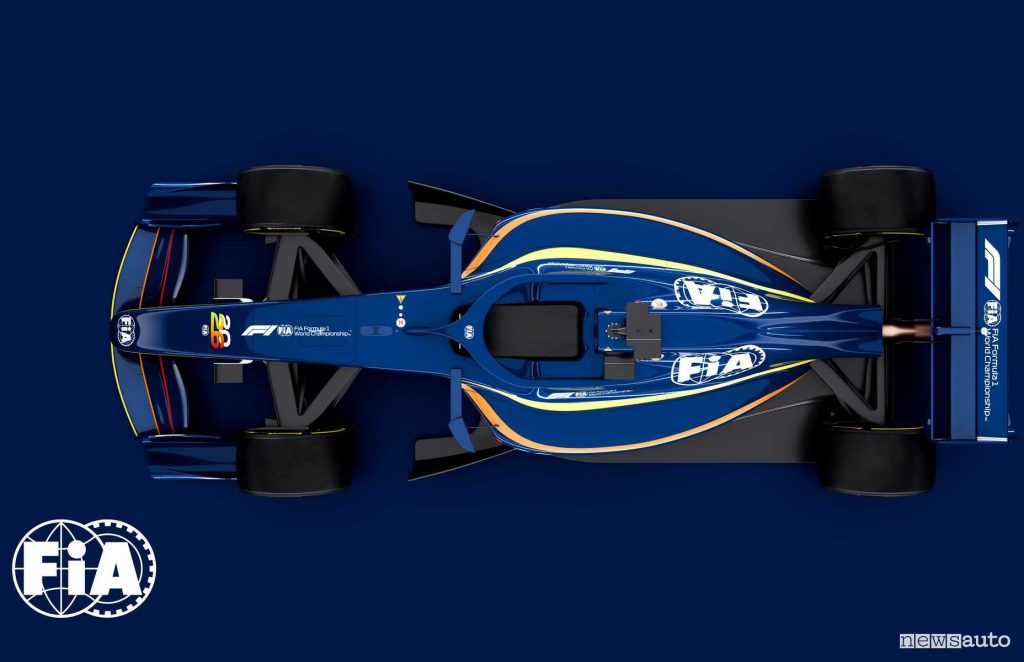
One of the main innovations in active aerodynamics will be the adoption of a system that will replace the traditional one DRS (Drag Reduction System, which provides two operating modes: the Z-Mode and the X-Mode. The high-downforce Z-Mode will be used to tackle the curveswhile the X-Mode, with low aerodynamic resistance, will be used on straight to increase the maximum speed.
Unlike DRS, which can only be used at specific points and when a driver is within one second of the car in front, X-Mode will allow drivers to change aerodynamic configuration regardless of the detachment from opponents. This system will involve both the rear and front wings, allowing smooth switching between modes in different parts of the circuit.

The head of aerodynamics of the FIA, Jason Somervilleexplained that the introduction of theX-Mode represents a substantial change compared to the DRS. The goal is to enable pilots to increase the maximum speed not only to facilitate overtaking, but also to improve the overall performance of the car in the race. X-Mode will be activated in predefined points of the lap and will be deactivated during braking, returning to high downforce mode to ensure stability in corners.
In addition to active aerodynamics, Formula 1 will also introduce the system Push-To-Passsimilar to that used in other categories such as Indycar. This system will provide drivers with an extra amount of energy for one lap, allowing them to have a go overtakes when they are close enough to another car.
F1 Regulations 2026 new dimensions of the single-seater
The Formula 1s of 2026 will be lighter than 30 kg and will have a reduced width dat 2,000 mm at 1,900 mm and a decreased pace from 3,600 mm to 3,400 mm. The wheels from 18 pcs will remain, but the width of the tires will be reduced by 25 mm at the front e 30 mm at the rear. The new regulations aim to make the cars less dependent on ground effectwith a maximum bottom width reduced to 150 mma partially flat bottom and a diffuser with reduced flow.




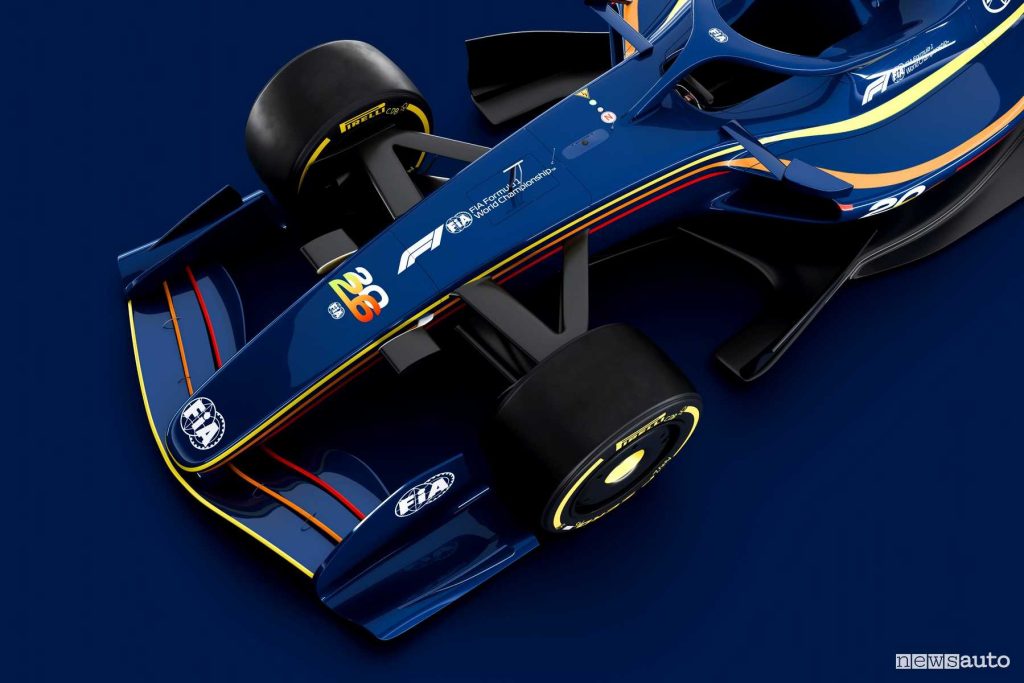
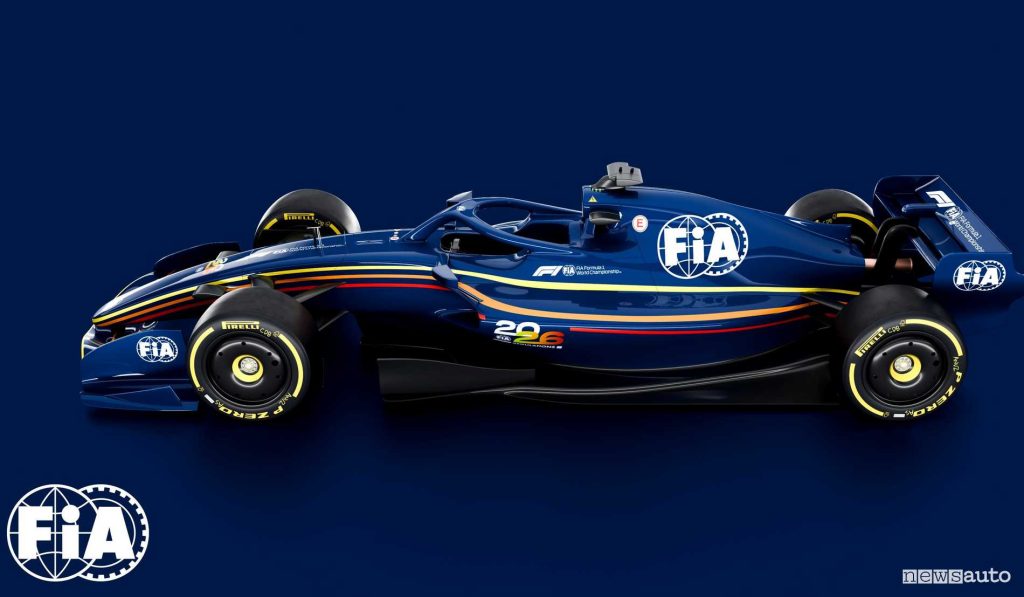
The reduction of the wheelbase will also be made possible by decrease in tank capacityfavored by greater “hybridization” of the thrusters, as explained before.
Interconnected F1 2026 single-seaters
As regards theinterconnection between cars on the trackwe plan to implement a communication system on Formula 1 single-seaters that allows each single-seater to know the position of the other cars in the race, promptly notifying the drivers in case of accidents or vehicles stopped on the track.

The desired cost reduction it should allow, in the Federation’s intentions, the entry of new teams. For now it’s certain Audi’s arrival in 2026.
Read also:
→ 2024 F1 Calendar
→ 2024 F1 Drivers and Constructors Rankings
→ Formula 1 timetables
→ F1 driver and constructor points as assigned
→ Sprint Race how it works
→ LIVE F1 Times
→ F1 NEWS
→ F1 Power Unit Regulations 2026
→ What do you think about the F1 season? Drop by F1 discussions on the FORUM!
#technical #regulations
